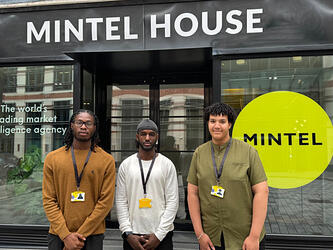Liar Liar: The truth about kids and research
Anyone who has ever tried to get a straight answer from a child will tell you it’s a tricky business, which is why kids’ research is such a specialised discipline. It’s a case of quality not quantity. A lot of time, money and effort is going to be spent getting to the truth. But get it right, and you’ll be rewarded with research gold dust.
Here’s how you smash through those ‘insight gob-stoppers’:
- Challenge them: don’t be afraid to have some banter. Say “I don’t believe you! I am surprised you said that. No way! Really?!” Kids aren’t aliens, we’ve all been one, relax and have fun. Pull them up if you think they’re trying to deceive you – they will respect you all the more for it.
- Use stimulus from their world: objects and props to personify and draw from their immediate world helps them root their responses in reality.
- Be on the ball: do your homework on trends, toys, games, brands etc. Show them you can’t be fooled and that you understand their world.
- Ask leading questions: make your analysis live, test out your ideas and hypotheses and get a reaction.
- Use friends to seek the truth: ask friends about each other, use them as a barometer for truth.
- Capture parent/child dynamic: it’s hard to understand a joint decision or family lifestyle without capturing both perspectives.
- Repeat questions: ask your killer questions in different ways at different points in the session. You may find you get alternative responses once they’re warmed up and relaxed.
- Use relaxed environments: kids are more likely to respond differently if they are in an over-stimulated environment or somewhere like school where the behaviour is pre-defined. Home or relaxed workshop spaces are best; sterile viewing facilities are certainly not ideal for kids’ research and mirrors are best avoided wherever possible.
- Use pre tasks to make them feel empowered: a pre task can do a lot to help your conversation. Setting individual missions can make kids feel like they have a responsibility. They don’t all have to do the same thing, use them as an opportunity and get to know them as individuals.
- Practice: a lot of the skill of filtering out the gems from the germs is intuition. Some have it, some don’t, but practice and experience will help hone your talent for cutting through quickly and efficiently.
So do kids lie in research? Not intentionally. But they do show off, try to please and try to say and do what they think is ‘right’. It is the researcher’s job to minimise this and to create an environment where respondents feel like they don’t have to behave in a certain way. And when you get past the ‘gob-stopper’ to the real truth that kids need brands to know, be it how they really feel about eating their greens or why they crave 18-rated games, you’ll know that it was worth the effort.

We hope you enjoyed this article.
Research Live is published by MRS.
The Market Research Society (MRS) exists to promote and protect the research sector, showcasing how research delivers impact for businesses and government.
Members of MRS enjoy many benefits including tailoured policy guidance, discounts on training and conferences, and access to member-only content.
For example, there's an archive of winning case studies from over a decade of MRS Awards.
Find out more about the benefits of joining MRS here.












1 Comment
Laurie Tema-Lyn
11 years ago
Your guidelines are spot on! There's one I would add to the list-which will vary based on the age- get the kids involved in some creative activities in the discussion. I bring props and tools and playful items with me-colorful things- markers, paper, fiddle toys like pipe-cleaners, yoyos, nerf balls, etc. Depending upon your session topic you can get some great insights and ideas from the right activity- drawing, word play, role-play/drama, and even just tossing around a colorful nerf ball while you talk.
Like Reply Report